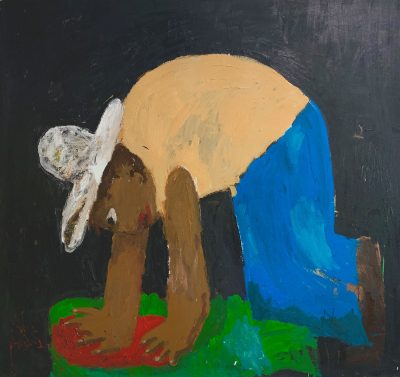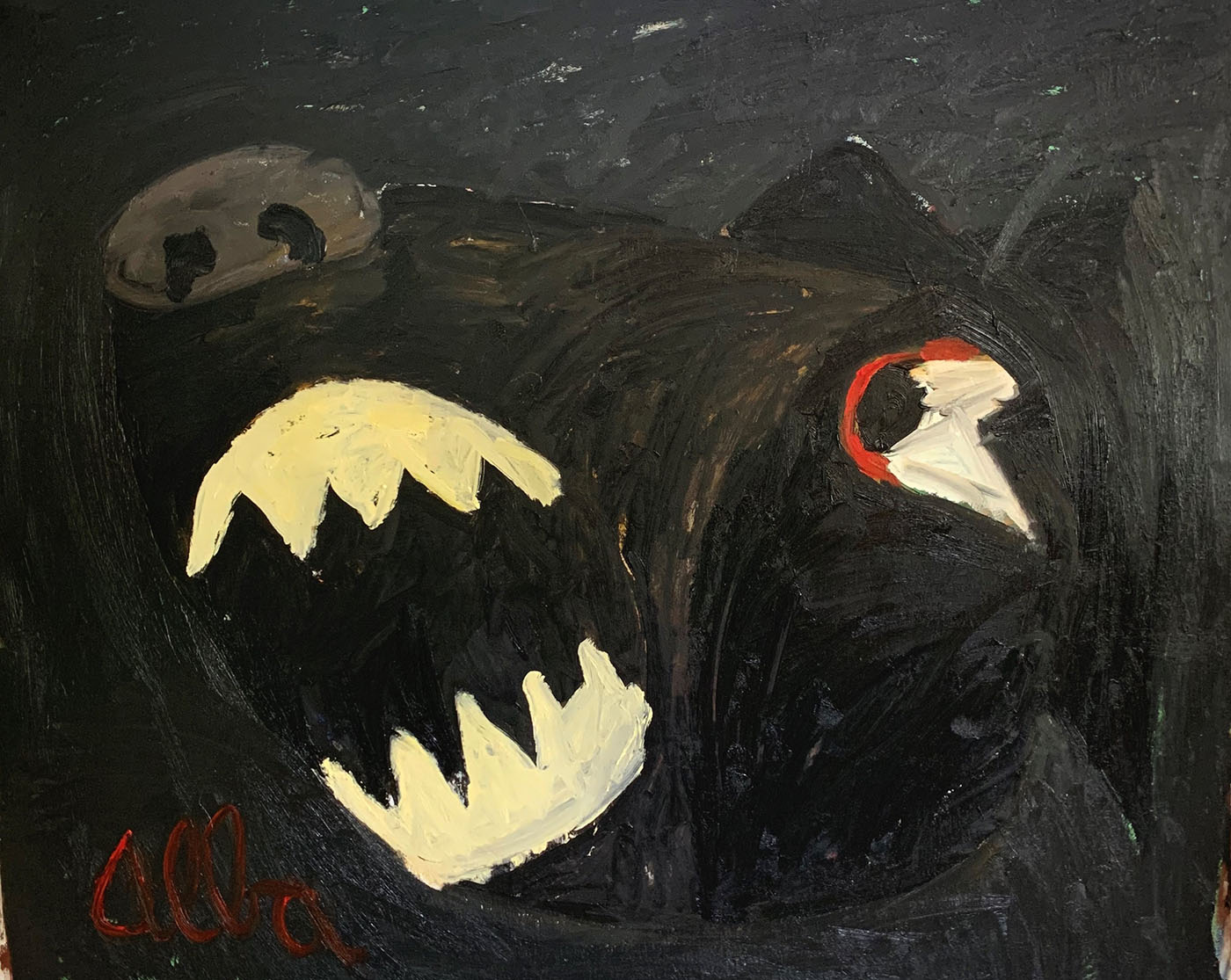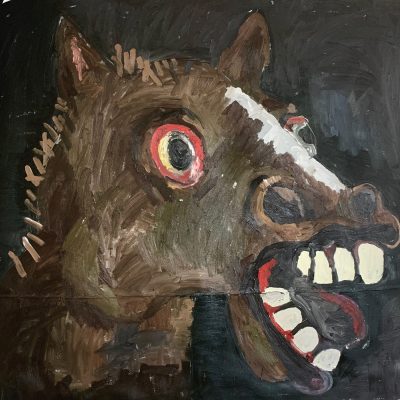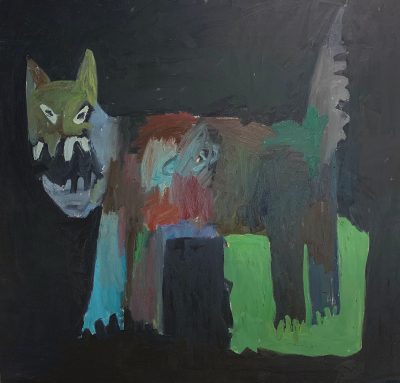Outrage as Righteousness in Andrew Alba’s Show Everyone Sucios
Art
2020 has been one of the most widespread experiences of shared trauma in living memory. Every community has experienced a portion of the anxiety and pain, but not equally. The shared experience of the pandemic and recession has given people and institutions long segregated into comfortably distinct worlds a common denominator—and it’s forcing us to witness the impact of disasters on poor communities, especially those of color. Sarah Hobin, Visual Arts and Community Outreach Manager at Finch Lane Gallery, says the format and content of the gallery’s shows launching this month—Andrew Alba’s Everyone Sucios and Laura Hendricks’ SIX MONTH SUMMER—reflect the mental health toll of multilayered crisis. Alba, a Salt Lake City native, artist, activist and construction worker who is a descendant of migrant Mexican workers, is using his painting as a protest, his outrage as a cause and his words to call out racist systems, from the police to the art world itself. The virtual exhibition opened on Friday, June 19, on saltlakearts.org/program/finch-lane-galleries.

Alba’s paintings feature call-backs to an American childhood with Mexican influences in Salt Lake City. His painting Laborer and earlier work Paisano (the word for countryman), both contain the symbol of the sombrero—a reminder of Southwestern and Central American workers’-rights movements, much like the work Mano de Obra Campesina, meaning “Hand of the Peasant Labor,” by Chilean, New York-born muralist Dasic Fernandez. “I don’t want to make art for artists,” Alba says. “I see a lot of academic art that seems to have a conversation with itself and leave out everyone that doesn’t have an education. I only see this as a way for the elite to pat each other on the back and call it a day without saying anything worthwhile to the people. I find that this approach to art is very intimidating to most people. Especially the Black, POC and lower-income communities.”
“I don’t want to make art for artists,” Alba says.
More paintings in Everyone Sucios are dark and tense visions of animals. They offer the viewer an immediate threat of violence that many people of color must carry around with them every day. Burro (slang for dunce) is a close-up of a donkey braying, in pain or lashing out. The image evokes emotional intensity. Dog is visual art, but almost immediately evokes a sound in your memory: You see the teeth and red eyes, and can hear the animal’s barking.
Though Alba has worked in the stratified art world for some time now—as a 2019 Artist-in-Residence (AIR) at the Utah Museum of Contemporary Art and a current AIR at Modern West Fine Art—he still gets reminders that as a person of color and a construction worker, many would assume he doesn’t belong there. “I think there is a lack of imagination concerning the depth of construction workers and laborers,” Alba says. When asked whether his construction clients know he’s an artist, he says, “The clients I work for? They typically choose not to talk to their laborers. And if it does come up that I am a painter, they usually think that I’m talking about painting houses. I don’t bother to correct them because I do, in fact, paint houses, and I’m fine with leaving it at that. But if it goes beyond that and they realize that I am an artist, they are always surprised that this dirty, brown guy covered in drywall dust is also an oil painter.”
Alba is a self-taught artist, and his determination—to succeed as an artist and to confront systems of injustice—comes through in his artwork. He says, “Painting, for me, has always been a form of protest. The process can be really intense at times. It has always been a way that I have dealt with the frustration I feel towards injustice and the state of the world. I have found that outrage can be a form of righteousness.”
“Painting, for me, has always been a form of protest. The process can be really intense at times.”
Hobin hopes that the frank depiction of anger and hurt at Finch Lane—and Alba’s words about conscious and unconscious racism—will prompt Utahns to confront truths about the disparities that exist in their own neighborhoods. “His art speaks to issues that are relevant regarding race and mental health in Salt Lake City and across the country,” says Hobin. “It will spark conversations that need to happen about racial justice and police violence, especially during this critical time. It will provide a space (even if it is primarily virtual space) to not only grapple with these issues but to be compelled to take action.”
From the spread of the pandemic to police violence against minorities and protesters demanding change, it’s easy to feel like the world is devolving into chaos. But at this critical moment of so much shared pain, activists like Alba—who won’t stop showing and talking about what’s really going on—are finally starting to get people to have an empathetic connection and to pay attention. The virtual show Everyone Sucios is on the Finch Lane website through July 31, and you can follow Alba on Instagram @andrew.alba. Visit the Finch Lane homepage for more information about upcoming events like Finch Lane’s Flash Series, and to read more about Laura Hendricks’ SIX MONTH SUMMER, visit their site and SLUGMag.com.



